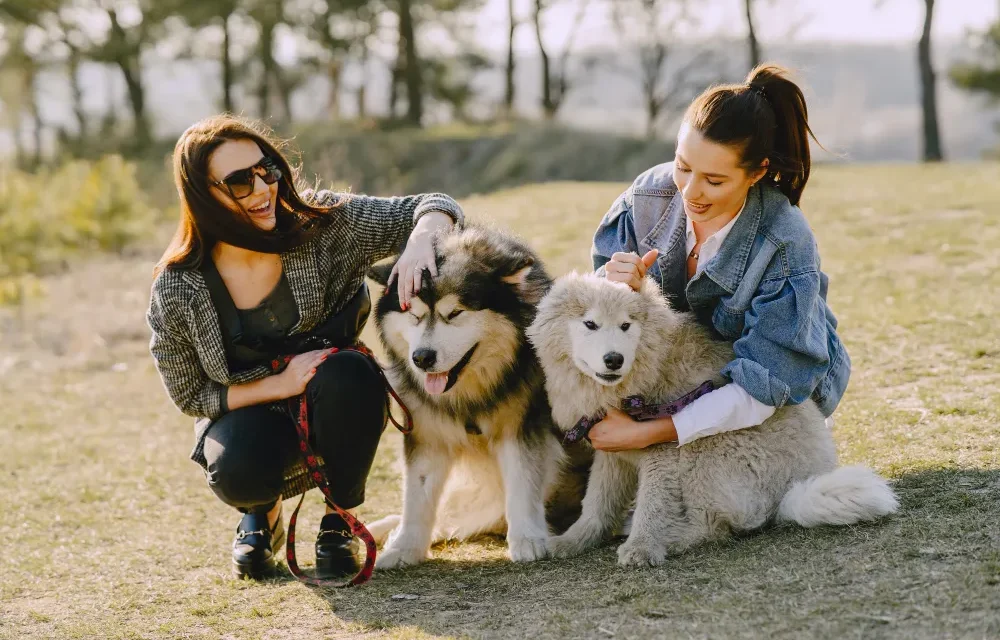Bringing a new dog into your home is an incredibly exciting time, filled with anticipation of wagging tails, playful antics, and endless companionship. But beyond the immediate cuddles and house-training, there’s a crucial aspect of their development that lays the foundation for a well-adjusted, confident, and happy life: socialization.
For new pet parents, the concept of “socializing” a dog might sound daunting. Is it just about meeting other dogs? What about people, new places, or strange sounds? This comprehensive guide will demystify the process, offering you a step-by-step roadmap to effectively socialize your canine companion, ensuring they grow into a confident and polite member of your family and the wider world.
Why is Dog Socialization So Important?
Think of socialization as teaching your dog how to navigate the human world with grace and confidence. A well-socialized dog is:
- Less fearful and anxious: Exposure to various stimuli in a positive way reduces fear-based aggression or excessive shyness.
- More adaptable: They handle new situations, environments, and people with ease, making vet visits, travel, and public outings stress-free.
- Better behaved: They understand appropriate interactions with other dogs and people, leading to fewer behavioral issues.
- Happier and healthier: Reduced stress contributes to overall well-being and a stronger bond with you.
The critical window for socialization is typically between 3 weeks and 16 weeks of age. During this period, pups are extremely impressionable and open to new experiences. While socialization can continue throughout a dog’s life, positive experiences during this formative stage are invaluable.
Key Principles of Effective Socialization
Before we dive into the steps, keep these core principles in mind:
- Positive Experiences are Paramount: The goal is to create positive associations. Never force interactions.
- Short and Sweet: Brief, positive exposures are far better than long, overwhelming ones.
- Quality Over Quantity: It’s not about meeting hundreds of dogs or people, but about having good, controlled positive interactions.
- Observe Your Dog’s Body Language: Learn to read signs of comfort, curiosity, fear, or stress.
- Always Supervise: Never leave your dog unsupervised during new interactions.
- Vaccinations First: Ensure your puppy has received their initial vaccinations before engaging in public socialization to protect their health.
Your Step-by-Step Guide to Socializing Your Dog
Step 1: Start with Your Home Environment (First Few Days or Weeks)
Your home is your dog’s first and most crucial world, where they’ll build their initial sense of safety and trust. Make it a place of enrichment and positivity.
- Introduce household sounds: Gradually expose your dog to everyday noises such as the vacuum cleaner, washing machine, doorbell, and TV sounds. Start with a low volume or at a distance, praising and rewarding them for calm, confident behavior.
- Familiarize them with different surfaces: Let your dog explore a variety of surfaces including tile, carpet, wood floors, and even a patch of grass to build their confidence and coordination.
- Gentle handling: Handle your dog’s paws, ears, mouth, and tail on a regular basis, while rewarding him with treats. This will make grooming and veterinary exams far less stressful later on.
- Family interactions: Encourage all members of your household to interact with your dog calmly and positively, using different voices, tones, and gestures to help the dog generalize positive experiences with people.
Step 2: Introduce New People (Beyond Immediate Family)
Once your dog is settled at home and feels secure, it’s time to expand their social circle.
- Controlled introductions: Invite calm, dog-friendly visitors to your home. Ask guests to approach slowly, offer a treat, and pet your dog gently, without overwhelming them with excitement.
- Exposure to diverse people: Gradually introduce your dog to people of different ages, including supervised children, as well as people wearing hats, sunglasses, uniforms, or other unusual attire to help them feel comfortable around all types of humans.
- Positive reinforcement: Reward your dog’s calm, curious behavior with treats and praise. If they seem hesitant, let them approach new people at their own pace to build confidence.
Step 3: Introduce Other Dogs (Controlled & Positive Encounters)
Meeting other dogs is an essential part of socialization but should always be handled carefully.
- Choose well-mannered dogs: Start with calm, vaccinated, well-socialized dogs whose behavior is predictable and friendly. Their calm presence will reassure your dog.
- Use neutral territory: Meet in a safe, neutral location like a quiet park or fenced yard, avoiding territorial behavior.
- Parallel walks: Begin with leashed parallel walks, keeping a comfortable distance between the dogs so they can observe and adjust without pressure.
- Supervised off-leash play: If both dogs are relaxed, allow brief, closely supervised off-leash play. Keep sessions short and positive to avoid overstimulation.
- Enroll in classes: Puppy classes or supervised group training provide a safe, structured way to expose your dog to others while building essential skills.
Step 4: Explore New Environments and Sounds
Expanding your dog’s world gradually will help build resilience and confidence.
- Short car rides: Take brief car trips around the neighborhood, slowly increasing distance while rewarding calm behavior to prevent travel anxiety.
- Varied walks: Visit new locations such as quiet dog parks, pet-friendly stores, nature trails, or even moderately busy streets (at a safe distance) to expose your dog to different sights and sounds.
- Surface exposure: Let them walk on concrete, gravel, grass, dirt trails, and uneven terrain to build adaptability.
- Introduce new noises: Expose your dog to distant traffic, sirens, children playing, or construction noises gradually. Reward calm reactions with treats and reassurance.
- Elevators and stairs: If you live in a multi-story building, introduce elevators and stairs gently, pairing the experience with praise.
Step 5: Incorporate Novel Objects & Experiences
Everyday items can appear strange or even frightening to a dog at first glance.
- Unusual objects: Introduce items like umbrellas, bicycles, skateboards, or rolling suitcases from a comfortable distance before letting your dog investigate more closely.
- Costumes and strange attire: If your dog may encounter costumed people or you plan to dress them up, introduce these gradually, pairing them with treats to build positive associations.
- Grooming tools: Let your dog sniff and explore brushes, nail clippers, and toothbrushes in a calm environment, rewarding calmness to prepare for future grooming.
Reading Your Dog’s Body Language
Learning to read your dog’s body language is critical to understanding when they are happy, nervous, or afraid.
- Signs of comfort and happiness: Relaxed posture, loose tail wagging, soft eyes, gently open mouth, playful movements.
- Signs of mild stress or discomfort: Lip licking, yawning (when not tired), turning their head away, freezing briefly, tucking their tail slightly, or showing the whites of their eyes (“whale eye”).
- Signs of fear or anxiety: Trembling, crouching, tightly tucked tail, ears flattened against the head, attempting to hide, growling as a warning, or excessive panting.
If you notice signs of stress, remove your dog gently and calmly from the situation and give them time to recover. Reintroduce them later at a slower, less intense pace.
Is it ever too late to Socialize a Dog?
No, it’s never truly too late to socialize a dog, but the approach may look different depending on their age and past experiences. Puppies have a critical socialization window (roughly 3 to 14 weeks old) when they are most receptive to new sights, sounds, and experiences. However, older dogs can absolutely still learn to be more confident and comfortable in new situations.
For rescue or adult dogs who may have missed early socialization, the process requires extra patience, consistency, and gentle exposure at their own pace. Positive reinforcement, gradual introductions, and working with a professional trainer or behaviorist can make a significant difference. Remember: any dog, at any age, can improve their social skills with the right support and understanding.
Can a Dog Become Aggressive If not socialized?
Yes , dogs that are not properly socialized can absolutely develop aggressive behaviors.
When a dog grows up with little to no positive exposure to other dogs, people, or everyday environments, they may become fearful of anything unfamiliar. Fear is one of the most common causes of aggression in dogs. If they feel threatened, cornered, or overwhelmed by situations they haven’t learned to handle, they may respond with defensive behaviors such as growling, barking, lunging, or even biting.
Other behavior of dog if not socialized:
- Fearfulness around strangers – reacting with anxiety, hiding, or trembling when meeting new people.
- Overreacting to new environments – excessive barking, pacing, or shutting down when exposed to unfamiliar places.
- Defensive aggression – growling, lunging, or snapping to protect themselves from perceived threats.
- Difficulty adapting to change – struggling with routine changes, new furniture, travel, or visitors in the home.
- Noise sensitivity – being overly startled or stressed by common household or outdoor sounds.
- Resource guarding – protecting food, toys, or resting spots due to insecurity.
- Separation anxiety – becoming overly attached to their owner and panicking when left alone.
- Excessive fear of handling – resisting grooming, vet visits, or simple physical contact because it feels unfamiliar.
What is the 7 7 7 rule for dogs when socializing?
The 7-7-7 rule is a simple puppy socialization guideline often shared by trainers and breeders to help new pet parents structure early social exposure. It suggests that by the time a puppy is about 7 weeks old, they should ideally experience:
➔ 7 different types of surfaces (carpet, tile, grass, gravel, wood, concrete, sand, etc.)
➔ 7 different types of people (men, women, children, people wearing hats, people with beards, people with glasses, people in uniforms)
➔ 7 different locations (home, yard, park, vet clinic, friend’s house, pet store, sidewalk, etc.)
The idea is to help puppies build a positive and confident foundation before their socialization window begins to close (usually around 14–16 weeks).
Of course, it’s only a guideline, the more positive, gentle, and varied exposure you provide, the better your dog will handle new experiences throughout life.




